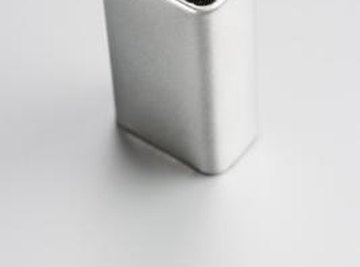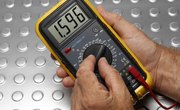
To reduce a 9V battery to 3.3 volts, use a zener diode, such as a 1N746 or a 1N4728A. Choose the appropriate one based on how much power it can dissipate.
A 1N4728A has a 3.3-volt and a 1 W power rating. It can supply, on average, a stable 3.3 volts to a circuit or another component. The maximum current Izm is approximately 1 W/3.3 V = 303 mA. This means you must use a series resistor to ensure that the value of the current flowing through the diode never exceeds this amount, else it will become damaged or destroyed.
One option is a 330-ohm resistor. Using Ohm’s Law, the maximum zener current I is (Vin – Vout)/R = (9 V – 3.3 V)/330 ohm = .0172 A = 17 mA. This is within the diode’s power rating, since P = IV = (17 mA)(3.3 V) = 57 mW. Note that the current is also well within the diode’s calculated Izm rating above. These calculations do not factor in the zener resistance, which is important for precision measurements.
- 9-volt battery
- Battery holder (optional)
- 1N4728A or equivalent zener diode
- 330-ohm resistor
- Circuit board
- Wires
- Multimeter
Resistors may be off as much as 20 percent of their rated value. Use a precision one if you need more accuracy.
It there is too much noise in the circuit, use a capacitor to filter the output.
A voltage divider or an op-amp linear regulator may be used instead of the zener regulator circuit.
The zener must be reverse-biased, or else it will behave like a regular silicon diode.
Diodes are sensitive devices. Be sure not to exceed the power, current and temperature ratings specified by the manufacturer.
Always exercise caution when building electrical circuits to avoid burning yourself or damaging your equipment.
Attach the positive side of the 9 V battery to one side of the resistor. If you are using a battery holder, this is the side with the red lead.
Connect the other end of the resistor to the cathode side of the zener diode, so that it will be reverse-biased. This is the side indicated by a mark.
Wire the remaining diode terminal to the negative side of the battery. If you are using a battery holder, this is the side with the black lead.
Place the multimeter on a DC voltage setting. Measure the voltage across the diode by placing a multimeter lead on each terminal. It should read approximately 3.3 volts. Note that the voltage between the battery and ground remains at 9 V.
Things You'll Need
Tips
Warnings
References
- Electronic Principles; Albert Malvino; 1999.
- Getting Started in Electronics; Forrest Mims III; 2000
- The Art of Electronics; Paul Horowitz and Winfield Hill; 1997
Tips
- Resistors may be off as much as 20 percent of their rated value. Use a precision one if you need more accuracy. It there is too much noise in the circuit, use a capacitor to filter the output. A voltage divider or an op-amp linear regulator may be used instead of the zener regulator circuit.
Warnings
- The zener must be reverse-biased, or else it will behave like a regular silicon diode. Diodes are sensitive devices. Be sure not to exceed the power, current and temperature ratings specified by the manufacturer. Always exercise caution when building electrical circuits to avoid burning yourself or damaging your equipment.
About the Author
Kim Lewis is a professional programmer and web developer. She has been a technical writer for more than 10 years and has written articles for businesses and the federal government. Lewis holds a Bachelor of Science, and occasionally teaches classes on how to program for the Internet.
Photo Credits
Jupiterimages/Polka Dot/Getty Images
